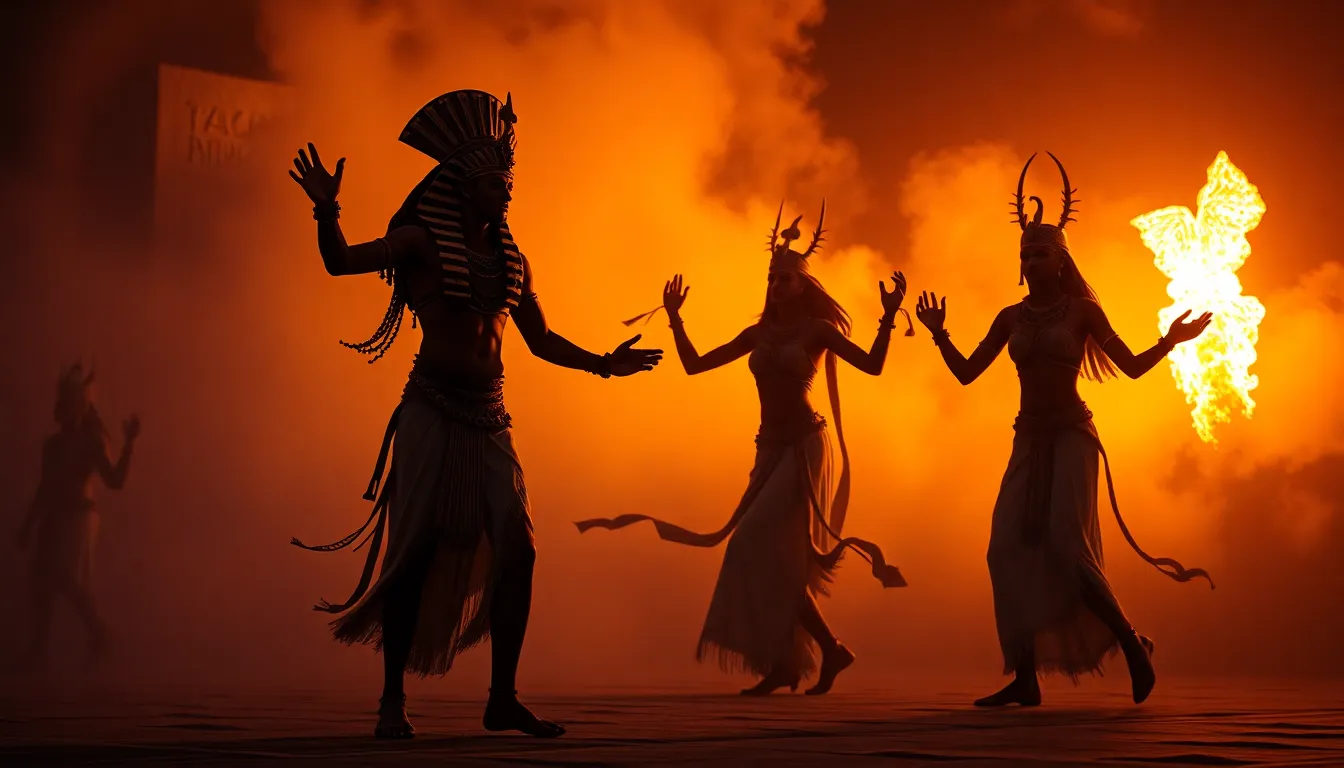The Importance of Sacred Dance in Worship
I. Introduction
Sacred dance is a form of expression that transcends mere movement; it embodies a spiritual connection that has been integral to various cultures and religious traditions throughout history. Defined as a dance performed as a part of worship or spiritual practice, sacred dance serves as a conduit for communication with the divine, allowing individuals to express their devotion and connect on a deeper level.
Across different religious landscapes, sacred dance has played a significant role in ritualistic practices, ceremonies, and personal expressions of faith. This article aims to explore the multifaceted role and impact of sacred dance in worship, highlighting its historical roots, spiritual significance, cultural relevance, psychological benefits, and the challenges it faces today.
II. Historical Context of Sacred Dance
The origins of sacred dance can be traced back to ancient cultures, where it was often intertwined with religious rituals and communal celebrations.
- Ancient Egypt: Dances were performed in honor of deities during festivals and ceremonies.
- Hinduism: Bharatanatyam and other classical dances were used to narrate stories from sacred texts.
- Indigenous Traditions: Many Native American tribes incorporate dance as a way to connect with the spirit world.
Over time, sacred dance has evolved, adapting to the cultural and spiritual needs of diverse communities. From the rhythmic movements of ancient rituals to the structured choreographies of modern worship, sacred dance remains a vital expression of faith.
III. Spiritual Significance of Sacred Dance
Sacred dance is not only a physical act but a holistic experience that connects the body, mind, and spirit. Through movement, worshippers can express their devotion and engage in a dialogue with the divine.
- Connection: The act of dancing can create a profound connection between the dancer and their spirituality.
- Expression: Movement allows for a unique form of worship that transcends spoken language.
- Enhancement of Experience: Sacred dance can elevate spiritual experiences, making them more poignant and memorable.
IV. Cultural Relevance of Sacred Dance
Sacred dance is a reflection of cultural identity and heritage, acting as a bridge between traditional practices and contemporary expressions of faith. It plays a crucial role in:
- Preserving Heritage: Traditional dances encapsulate the history and values of a community.
- Modern Integration: Many religious communities are incorporating traditional dances into their modern worship settings, keeping the practice alive.
- Preservation Efforts: It is essential to maintain sacred dance as part of cultural heritage, ensuring that future generations can experience its significance.
V. Psychological Benefits of Sacred Dance
Engaging in sacred dance offers numerous psychological benefits.
- Emotional Well-being: Dance can serve as a form of emotional release, helping individuals process their feelings.
- Community Building: Participating in dance fosters a sense of belonging and connection among worshippers.
- Therapeutic Aspects: Movement can be healing; many find solace and strength in expressing their spirituality through dance.
VI. Sacred Dance as a Form of Prayer
Sacred dance can be understood as a non-verbal form of communication with the divine, where movement becomes a prayer in itself.
- Choreography and Improvisation: Both planned and spontaneous movements can convey deep spiritual messages.
- Personal Testimonies: Many worshippers share experiences of feeling closer to the divine while dancing, highlighting its power as a form of prayer.
VII. Challenges and Misconceptions
Despite its rich history and benefits, sacred dance faces several challenges and misconceptions.
- Common Misunderstandings: Some view dance as frivolous or inappropriate in a worship setting.
- Resistance: Certain religious communities may resist incorporating dance into their practices due to traditional views.
- Balancing Tradition: Finding a balance between traditional forms of sacred dance and modern expressions can be challenging.
VIII. Conclusion
In conclusion, sacred dance holds a multifaceted importance in worship, serving as a vital expression of faith, cultural identity, and community connection. It enriches spiritual experiences and fosters emotional well-being, making it a valuable practice in many religious traditions.
As communities continue to evolve, it is essential to embrace and promote sacred dance, recognizing its role in fostering inclusivity and understanding within worship practices. By doing so, we honor our past while creating a vibrant future for sacred expressions of faith.




